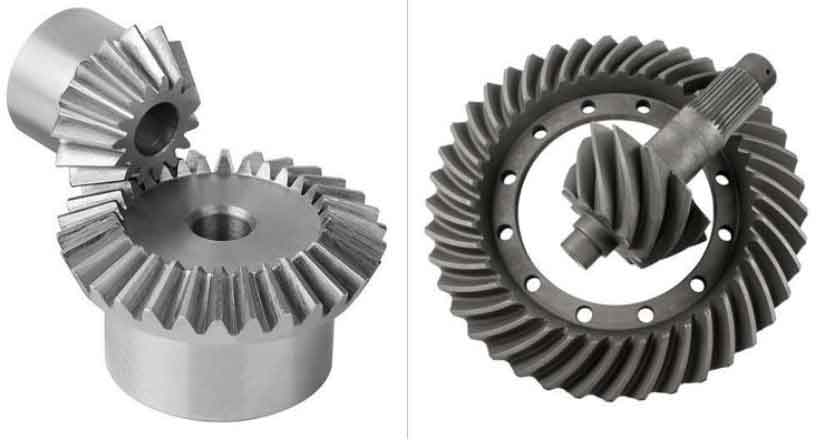When choosing between spiral bevel gears and straight bevel gears, several factors need to be considered based on the specific requirements of the application. Let’s compare the two gear types to help you make an informed decision:

Tooth Engagement:
In straight bevel gears, the tooth engagement occurs instantaneously along a line contact. This sudden engagement/disengagement can cause noise, vibration, and impact loads. On the other hand, spiral bevel gears have a curved tooth profile that provides a gradual and smooth tooth engagement. This results in reduced noise, vibration, and improved load distribution.
Load Capacity:
Spiral bevel gears have a higher load-carrying capacity compared to straight bevel gears. The curved tooth profile and crown design of spiral bevel gears distribute the load over a larger contact area, reducing stress concentrations. This makes them suitable for applications that involve heavy loads and high torque.
Efficiency:
Spiral bevel gears generally have higher efficiency due to their smooth tooth engagement. The gradual meshing and reduced friction result in lower power losses compared to straight bevel gears, making them more efficient in power transmission.
Noise and Vibration:
Spiral bevel gears are known for their quieter operation compared to straight bevel gears. The curved tooth profile and gradual tooth engagement help minimize noise and vibration, making them suitable for applications where noise reduction is important, such as automotive differentials.
Cost and Manufacturing Complexity:
Straight bevel gears are relatively simpler in design and easier to manufacture compared to spiral bevel gears. Spiral bevel gears require more precise machining and specialized expertise, which can increase manufacturing costs. However, the added benefits of spiral bevel gears may outweigh the higher costs in certain applications where performance and durability are crucial.
Application Considerations:
The specific application requirements play a significant role in gear selection. If the application involves high loads, heavy torque, or a need for quiet operation, spiral bevel gears are often preferred. Straight bevel gears may be suitable for applications with lower loads or when cost considerations are paramount.
It’s important to consult with an experienced gear designer or engineer who can evaluate your specific application needs and provide guidance on selecting the most appropriate gear type. Additionally, considering factors such as torque requirements, operating conditions, space limitations, and budget constraints will help determine the best choice between spiral bevel gears and straight bevel gears.
